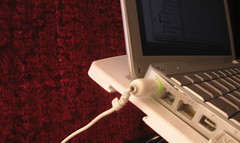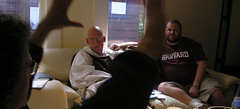Taking Land and Water Public: Interventions In and Outside the Academy
At the forefront of many disciplines, a dialogue is emerging about the concept of common property. Converging conversations in the social sciences, applied sciences, humanities and arts have been driven by contemporary political questions like the urbanization and simultaneous water crisis in the global south, the decline of public investment in infrastructure and flood control in the global north, and more recently, more recently, the financialization of land and water as commodities as expressed by the American subprime crisis and the African land grab. At the same time, new technologies of GIS and crowdsourced mapping have driven scholars to experiment with plotting their data on a map. In fields diverse as economics, psychology, history, anthropology, and literature, a “spatial turn” has been heralded where abstract theory has centered around questions of our common responsibility for land and water and the techniques by which we come to knowledge of the space around us. Disciplinary discussions have included histories of cartography and land surveying, economic debates over the uses of land titling to enfranchise the global poor, anthropological studies about the deracination of indigenous societies from control over their land and water, archival investigations about how GIS-located archives can be mined for information about nineteenth-century cities, and technological explorations around the possible application of GIS to creating self-governing commons in land and water.
I firmly believe that abstract philosophical understandings of property, economy, and land are at their most powerful when in conversation with the creative expressions of art, technology, and activism, interacting with the public across a range of mutual interventions. For that reason, I'm in the course of organizing a conference and edited volume that would bring together some of the technologists, activists, archivists, and artists at the forefront of mapping practices and spatial activism. The list of invited participants includes activists like Liz Barry of Public Laboratory, who trains environmentalist neighborhood groups to map instances of polluted rivers around them, as well as archivists like Matthew Knutzen of the New York Public Library, whose many mashups of nineteenth-century maps allow historians to identify all sites of toxic pollution from centuries past. The academic, artistic and activist practices represented at the conference will refract ideas of common responsibility for land and water through bridging abstract ideas of joint responsibility for land and water with ordinary experiences of the everyday lots and yards of the city around us. The weekend workshop, where participants will meet each other and review drafts, will produce an edited volume of scholarly work, an online video series bringing informal versions of the papers to the public, and a series of material interventions engineered by Brown public humanities’ masters students. The edited volume, workshop, online videos, and material exhibits will directly relate socially-engaged scholarship to the ordinary urban places around us, thus generating a powerful series of exchanges between the university and its public.
Psychogeography -- conceived of as the exploration of land use through physical walking, interdisciplinary conversation, and creative exchange -- has deep roots in several avant-garde revolutionary movements in mid-twentieth-century Europe. Walter Benjamin and Charles Baudelaire’s figure of the flâneur (saunterer), the Letterist International’s unitary urbanism, the Situationist International’s ideas of dérive (wandering) and détournement (reappropriation), among others. However, the word itself was first coined by Guy Debord in his 1955 essay “Introduction to a Critique of Urban Geography,” where he defined it as “the study of the precise laws and specific effects of the geographical environment, consciously organized or not, on the emotions and behavior of individuals.
In the decades since Debord and his situationist colleagues walked Paris together, scholars have been grievously unable to keep pace with the spatial thinking that has flooded popular culture. Google Maps, emotion maps, social media geotagging, and a broadening culture of outdoor protest, art, performance, and urban farming. These phenomena, driven largely by the world of technology startups, art practice, and activism, have much in common with themes explored in urban history and the history of cartography. However, scholars in the social sciences have been slow to make clear connections between their work and the emergent possibility of crowd-sourced mapping of the urban environment, with the result that important questions have gone unasked. What does it mean to attend to the emotions of people displaced by interstate highways, or to notice the spirituality of activists following GIS across a landfill? How will the ability to crowdsource oral history in the city change the collection of data within the disciplines of sociology and history? What does it mean to walk through a city while also walking through an iPhone tour of its radical history? How may these new experience change our fields, and who we conceive of as the audience for our books and articles about cities, land, and the public?
Brown’s Public Humanities Center makes a natural home for the Psychogeography conference asn experimental dialogue between abstract scholars of land use and activists in the field. The program in Urban Cultural Heritage & Creative Practice, with its commitment to helping the public understand relationships between economic and technological growth in the city fabric. So, too, the many scholars at Brown whose scholarship focuses on the exclusions of the working poor and racial minorities from access to housing and infrastructure in the urban environment. If the conference is able to secure funding at Brown, we will expand the initial draft of scholars recruited to an edited volume to especially target Brown scholars whose ideas interface with questions of land use and responsibility. We intend to specifically target social scientists such as Robert Self, Seth Rockman, Linford Fisher, John Logan, and Hilary Silver, powerfully involved with conversations about social justice and the city, as well as new media scholar Wendy Chun and other scholars at the forefront of exploring spatial experience through the use of new technology.
The notion of a “dream field” invokes, in poet Jorie Graham’s turn of phrase, a unified field where the abstract sciences of philosophy, law, and mathematics meet the down-to-earth observations of poets walking the surface of the earth and musing about personal responsibility for nature in the tradition of William Wordsworth and Wendell Berry. Our “dream field” too will bridge abstract conversations with down-to-earth investigations, inviting students, members of Brown’s faculty, and the local public to join academics, activists, and artists working broadly on the question of land use, its exploration, and common responsibility. The meeting of strangers upon common ground, will, we hope cross-fertilize many adjacent practitioners, arming cultural practitioners like artists, journalists, and activists with the documented social science of anthropologists and historians, exposing both to new technologies in the participatory, digital mapping of common land.
Students will be invited to participate in taking the scholarship back into the landscape, working directly with scholars visiting Brown for the occasion of the workshop to foster a radical new experience of land that draws out the themes of land and water responsibility through an intervention in some public site around Providence. For example, we might invite a Brown masters student to collaborate with property law historian David Armitage at the site of Roger Williams' homestead, putatively the "first fence" in Rhode Island. The public humanities student might think about how to rebuild the fence, in some symbolic way. A public humanities student might reconstruct the first fence (with warning labels? with invitations to reinscribe the commons? with yarn boundaries suggesting the previous, alternative, indigenous songlines and common field lines that were displaced by the coming of the fence?). Or they might gather a crowdsourced, digital map of contemporary fences that matter to the Providence public, using the conference as an opportunity to explore the legacy of exclusions from land.
Such public interventions, with students and senior faculty working together on a single site, give an opportunity for redacting emergent scholarship and drawing out its implications for nearby fields. Armitage has argued that seventeenth-century property law meant a fully embodied, psychological, and environmental intervention in the context of contemporary experience —a charge that has never been fully taken up in the context of British history, which is disciplinarily bound to diplomatic and intellectual historiography. Arguments about the historical and constructed nature of the boundary line around personal bodies and personal property, however, bear far more weight in the context of material history and new media theory. His scholarship is all the more relevant when read in conjunction with contemporary debates over the future of the commons in public land and the environment. In presenting a legal history in the form of a new media intervention for the public , a senior scholar like Armitage will have the opportunity to catapult his theories out of their disciplinary setting and into a place of direct relevance for adjacent fields.
The expertise of Brown’s Public Humanities and S4 students in community-based curation of humanities resources and in understanding spatial contexts will be key to the success of this conversation. We expect this interdisciplinary conference, together with the video and student collaborations, to push theoretical ideas from the university disciplines into an even more articulate, engaged, and interdisciplinary level of expression.










0 Comments:
Post a Comment
<< Home